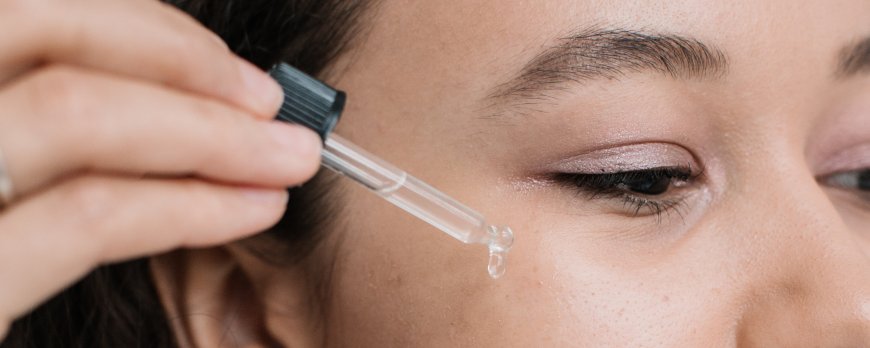How to Eat for Clear Skin?
Discover 'How to eat for clear skin?' Our guide shares top dietary tips for a radiant, acne-free complexion. Your skin's health starts with your diet.

How to Eat for Clear Skin?
Achieving clear skin starts with what you eat. By following a clear skin diet and incorporating skin-friendly foods into your daily meals, you can significantly improve the health and appearance of your skin.
Key Takeaways:
- Include low-glycemic foods like fruits, vegetables, whole grains, and beans in your diet to reduce inflammation and sebum production.
- Probiotics found in fermented foods can regulate the skin microbiome and prevent acne.
- Omega-3 fatty acids from fatty fish, flax seeds, and walnuts can decrease inflammation and improve skin conditions.
- Lean proteins like chicken breast, turkey, and beans can reduce acne by lowering androgen and growth hormone levels.
- Consume plant foods rich in fiber and polyphenols to improve gut health and reduce inflammation.
In contrast, avoid high-sugar and saturated fat foods, processed foods, red meat, cheese, butter, dairy products, and chocolate to minimize acne and inflammation. Pay attention to individual reactions to certain foods and consult with a dermatologist to personalize your clear skin eating plan.
The Role of Diet in Skin Health
The saying "you are what you eat" holds true when it comes to your skin. The foods you consume play a significant role in determining the health and appearance of your skin. A diet rich in skin-friendly foods can help you achieve clear, radiant skin.
When it comes to promoting skin health, it's important to focus on nutrition. Certain foods are known to have a positive impact on the skin. Incorporating these foods into your diet can help reduce acne, inflammation, and other skin issues.
Foods for Healthy Skin:
- Low-Glycemic Foods: Fruits, vegetables, whole grains, and beans have a low glycemic index, which means they don't cause a spike in blood sugar levels. Consuming these foods can help reduce inflammation and sebum production, leading to clearer skin.
- Probiotic-Rich Foods: Fermented foods like miso, kimchi, yogurt, and kefir contain beneficial bacteria that can regulate the skin's microbiome and prevent acne.
- Omega-3 Fatty Acids: Fatty fish like salmon, flax seeds, and walnuts are rich in omega-3 fatty acids, which possess anti-inflammatory properties and can improve various skin conditions.
- Lean Proteins: Chicken breast, turkey, and beans are excellent sources of lean proteins. These proteins can lower androgen and growth hormone levels, reducing the risk of acne.
- Fiber and Polyphenols: Plant foods rich in fiber and polyphenols, such as greens, vegetables, quinoa, and oats, promote gut health and reduce inflammation, resulting in clearer skin.
While incorporating these skin-friendly foods into your diet, it's equally important to avoid certain foods that can worsen acne and inflammation. High-sugar and high-saturated fat foods, processed foods, red meat, cheese, butter, dairy products (especially cow's milk), and chocolate have been associated with acne and dull skin. It's advisable to limit these foods for the sake of clear skin.
Your skin is unique, and it's essential to pay attention to how it reacts to different foods. Working with a dermatologist can help you develop a personalized eating plan that suits your skin's specific needs. By nourishing your body with the right foods, you can eat your way to clear, healthy skin.

Incorporating Low-Glycemic Foods
To achieve clear skin, it's important to incorporate low-glycemic foods into your diet. These foods can help reduce inflammation and regulate sebum production, leading to a clearer, healthier complexion. Low-glycemic foods have a slower impact on blood sugar levels, preventing spikes that can contribute to acne breakouts. Here are some skin-friendly low-glycemic foods to include in your meals:
- Fruits: Choose berries, cherries, apples, and pears, which have a lower glycemic index compared to tropical fruits like bananas and pineapples.
- Vegetables: Opt for non-starchy vegetables like leafy greens, broccoli, cauliflower, bell peppers, and asparagus. These vegetables are packed with essential vitamins and minerals that support skin health.
- Whole Grains: Include whole grains such as quinoa, brown rice, and oats, which provide complex carbohydrates and dietary fiber. These grains are digested more slowly, preventing blood sugar spikes.
- Legumes: Add beans, lentils, and chickpeas to your meals. They are not only low-glycemic but also rich in protein, fiber, and antioxidants that promote clear skin.
Incorporating these low-glycemic foods into your diet can have a positive impact on your skin. Remember to also maintain a balanced and varied diet to ensure you're getting all the nutrients your skin needs to stay healthy. Experiment with different recipes and flavors to make your meals enjoyable while nourishing your skin.
Harnessing the Power of Probiotics
Probiotics are not only good for your gut, but also for your skin. Including probiotic-rich foods in your diet can help regulate the skin microbiome and reduce the occurrence of acne breakouts. Fermented foods like miso, kimchi, yogurt, and kefir are excellent sources of probiotics that can benefit your skin.
The Benefits of Probiotics for Clear Skin:
- Regulate the skin microbiome: Probiotics help maintain a healthy balance of bacteria on the skin, preventing harmful bacteria from causing inflammation and breakouts.
- Reduce acne: Probiotics have been shown to reduce the severity and frequency of acne breakouts by supporting a healthy immune response and reducing inflammation.
- Improve skin barrier function: Probiotics can enhance the skin's natural barrier, protecting it from environmental damage and reducing water loss, resulting in healthier and more radiant skin.
By adding probiotic-rich foods to your diet, you can support your skin's health from the inside out. Incorporate fermented foods like miso, kimchi, yogurt, and kefir into your meals and snacks to harness the power of probiotics for clear and glowing skin.

Embracing Omega-3 Fatty Acids
Omega-3 fatty acids are not only essential for heart health but also for clear, glowing skin. Including foods rich in omega-3s in your diet can help decrease inflammation and improve your skin's overall appearance. These healthy fats have been shown to reduce acne breakouts, calm redness, and even combat dryness.
So, which foods should you be incorporating into your clear skin diet? Fatty fish such as salmon, mackerel, and sardines are excellent sources of omega-3s. Not only do they offer the benefits of these essential fats, but they also provide high-quality protein, which is essential for skin repair and rejuvenation.
If you follow a vegetarian or vegan diet, fear not! There are plant-based sources of omega-3s that you can enjoy. Flax seeds, chia seeds, and walnuts are all rich in these beneficial fats. Sprinkle them on your morning oatmeal or add them to a smoothie to give your skin a nourishing boost.
How to Include Omega-3-Rich Foods in Your Diet:
- Add flax seeds or chia seeds to your breakfast cereal or yogurt.
- Grill or bake a serving of fatty fish like salmon for dinner a few times a week.
- Snack on a handful of walnuts between meals to satisfy hunger and promote clear skin.
- Consider taking a high-quality omega-3 supplement if you struggle to get enough of these beneficial fats through diet alone.
Remember, while omega-3 fatty acids are fantastic for your skin, they are just one piece of the clear skin puzzle. Incorporate a variety of skin-friendly foods into your diet, such as low-glycemic fruits and vegetables, probiotic-rich fermented foods, lean proteins, and fiber-rich plant foods. By prioritizing nutrition for clear skin, you'll be well on your way to achieving a radiant and healthy complexion.

The Role of Lean Proteins
Lean proteins are an important component of a clear skin diet. By including sources such as chicken breast, turkey, and beans in your meals, you can help balance hormone levels and reduce the occurrence of acne. Lean proteins offer a variety of benefits for the skin.
1. Hormone Regulation:
Consuming lean proteins can help regulate and balance hormone levels in the body. Hormonal imbalances, such as elevated androgen and growth hormone levels, can contribute to acne breakouts. By incorporating lean proteins into your diet, you can support hormonal equilibrium and promote clearer skin.
2. Tissue Repair and Cell Renewal:
Lean proteins are rich in amino acids, which are essential for tissue repair and cell renewal. These nutrients help to strengthen and regenerate the skin, promoting a healthy complexion. Whether you choose lean cuts of meat or plant-based protein sources like beans, incorporating these foods into your meals can support the skin's natural healing process.
3. Collagen Production:
Collagen is a vital protein that provides structure and elasticity to the skin. Consuming lean proteins can stimulate collagen production, helping to reduce the appearance of fine lines and wrinkles. By including chicken breast, turkey, or beans in your diet, you can support the production of collagen and promote a more youthful complexion.
Incorporating lean proteins into your clear skin diet is a simple and effective way to improve your skin health. By balancing hormone levels, supporting tissue repair and cell renewal, and stimulating collagen production, lean proteins can contribute to a clearer, more radiant complexion. Remember to consult with a dermatologist or nutritionist to create a personalized eating plan that suits your individual needs and goals.

Boosting Skin Health with Fiber and Polyphenols
A diet rich in fiber and polyphenols can do wonders for your skin. Including plant-based foods like greens, vegetables, quinoa, and oats in your meals can improve gut health and reduce inflammation, resulting in a clearer complexion.
Benefits of Fiber for Skin
- Fiber aids in digestion, helping to eliminate toxins and waste from the body, which can contribute to clearer skin.
- It promotes regular bowel movements, preventing constipation and ensuring that the body is effectively eliminating waste products.
- By keeping blood sugar levels stable, fiber helps to prevent insulin spikes that can trigger acne breakouts.
The Power of Polyphenols
- Polyphenols are antioxidants that protect the skin from free radical damage, which can cause premature aging and dullness.
- They reduce inflammation in the body, which can help calm acne flare-ups and improve overall skin tone.
- Polyphenols also support the growth of beneficial bacteria in the gut, leading to a healthier microbiome and better skin health.
By incorporating these skin-friendly foods into your diet, you can enhance your skin's natural radiance and promote a clearer complexion. Remember to listen to your body and pay attention to how certain foods may affect your skin. Working with a dermatologist or nutritionist can help you develop a personalized eating plan that suits your specific skin needs. With the right nutrition, you can achieve a glowing, healthy complexion.
Foods to Avoid for Clear Skin
While certain foods can improve your skin's health, there are also foods that can contribute to acne breakouts and inflammation. It's important to be mindful of the foods you consume if you want to achieve clear skin.
Here are some foods to avoid or limit in your diet:
- High sugar foods: Consuming excessive amounts of sugar can lead to increased sebum production and inflammation, which can worsen acne.
- Saturated fats: Foods high in saturated fats, like red meat, cheese, and butter, can contribute to clogged pores and inflammation in the skin.
- Processed foods: Processed foods often contain additives, preservatives, and unhealthy oils that can trigger acne and skin inflammation.
- Cow's milk and dairy products: Cow's milk has been linked to acne breakouts in some individuals. Dairy products like cheese and butter can also worsen acne due to their high saturated fat content.
- Chocolate: While it may be a favorite treat, chocolate can contribute to acne breakouts and can also lead to dull skin and early signs of aging.
It's important to note that individual reactions to these foods may vary. Some people may be more sensitive to certain foods and may experience more pronounced skin reactions. Consulting with a dermatologist can help you identify any specific triggers for your skin and develop a personalized eating plan to achieve clear and healthy skin.
Conclusion
Eating for clear skin is not just a fad, but a lifestyle choice that can significantly improve the health and appearance of your skin. By following a skin-friendly diet and being mindful of the foods you eat, you can eat your way to a clear, radiant complexion.
To achieve clear skin, it is important to consume foods that promote skin health and avoid those that can worsen acne. Incorporating low-glycemic foods like fruits, vegetables, whole grains, and beans into your diet can help reduce inflammation and sebum production, leading to clearer skin.
Probiotics found in fermented foods like miso, kimchi, yogurt, and kefir can regulate the skin microbiome and prevent acne. Omega-3 fatty acids from fatty fish, flax seeds, and walnuts can decrease inflammation and improve various skin conditions.
Lean proteins like chicken breast, turkey, and beans can reduce acne by lowering androgen and growth hormone levels. Consuming plant foods rich in fiber and polyphenols, such as greens, vegetables, quinoa, and oats, can improve gut health and reduce inflammation.
On the other hand, it is important to limit foods high in sugar and saturated fats, like red meat, cheese, butter, and processed foods, as they can lead to acne and inflammation. Dairy products, especially cow's milk, have been linked to acne and should be limited. Sugar and chocolate can also worsen acne and contribute to dull skin and wrinkles.
Remember to pay attention to your individual reactions to certain foods and work with a dermatologist to develop a personalized eating plan for clear skin. By making conscious choices and incorporating skin-friendly foods into your diet, you can nourish your skin from within and achieve a clearer, healthier complexion.
FAQ
What should I eat to promote clear skin?
Focus on consuming low-glycemic foods like fruits, vegetables, whole grains, and beans. Incorporate probiotic-rich foods like miso, kimchi, yogurt, and kefir for a healthy skin microbiome. Include omega-3 fatty acids from fatty fish, flax seeds, and walnuts. Opt for lean proteins such as chicken breast, turkey, and beans. Consume fiber and polyphenol-rich plant foods like greens, vegetables, quinoa, and oats for improved gut health.
What foods should I avoid to maintain clear skin?
It is best to avoid or limit foods high in sugar and saturated fats such as red meat, cheese, butter, and processed foods. Dairy products, especially cow's milk, have been linked to acne and should be limited. Sugar and chocolate can also worsen acne and contribute to dull skin and wrinkles. It is important to pay attention to individual reactions to certain foods.
Why is diet important for skin health?
Diet plays a crucial role in skin health as certain foods can either promote or worsen acne. A healthy diet can reduce inflammation, regulate sebum production, maintain a healthy skin microbiome, decrease androgen and growth hormone levels, and improve gut health. By incorporating skin-friendly foods and avoiding those that can trigger breakouts, you can support clear and radiant skin.


































































































































